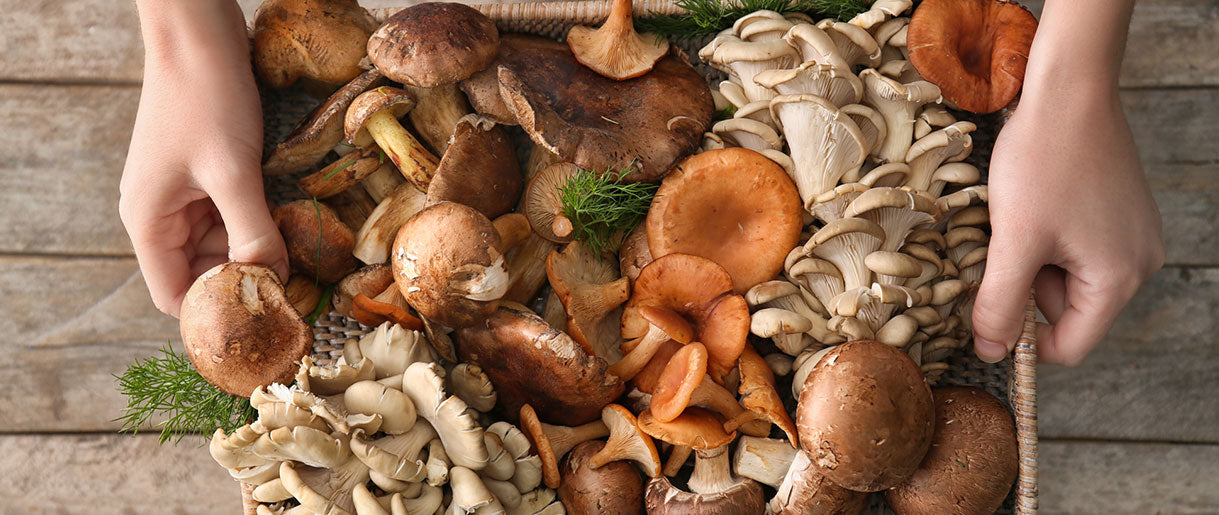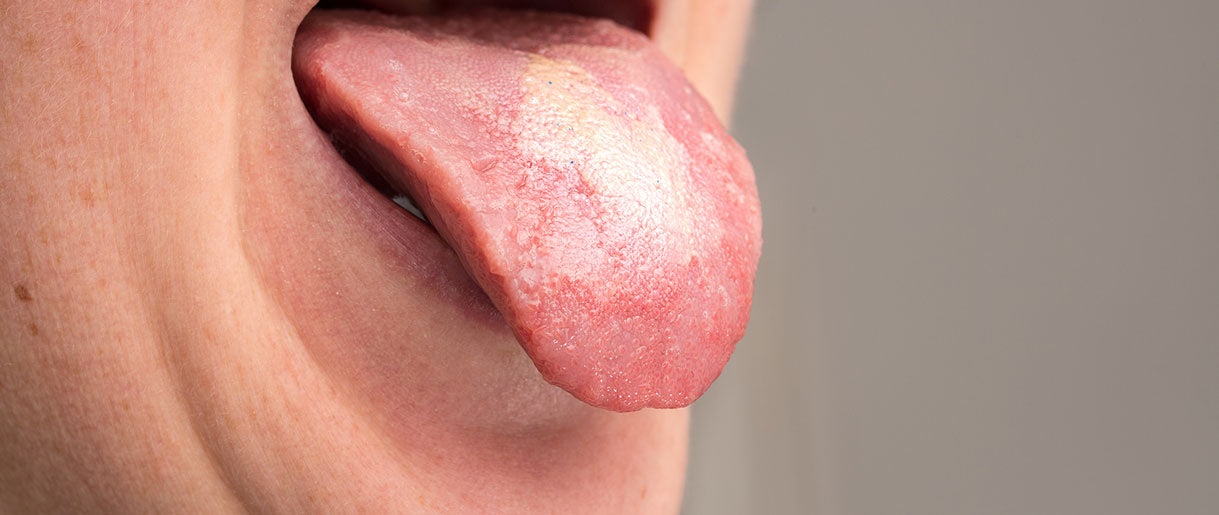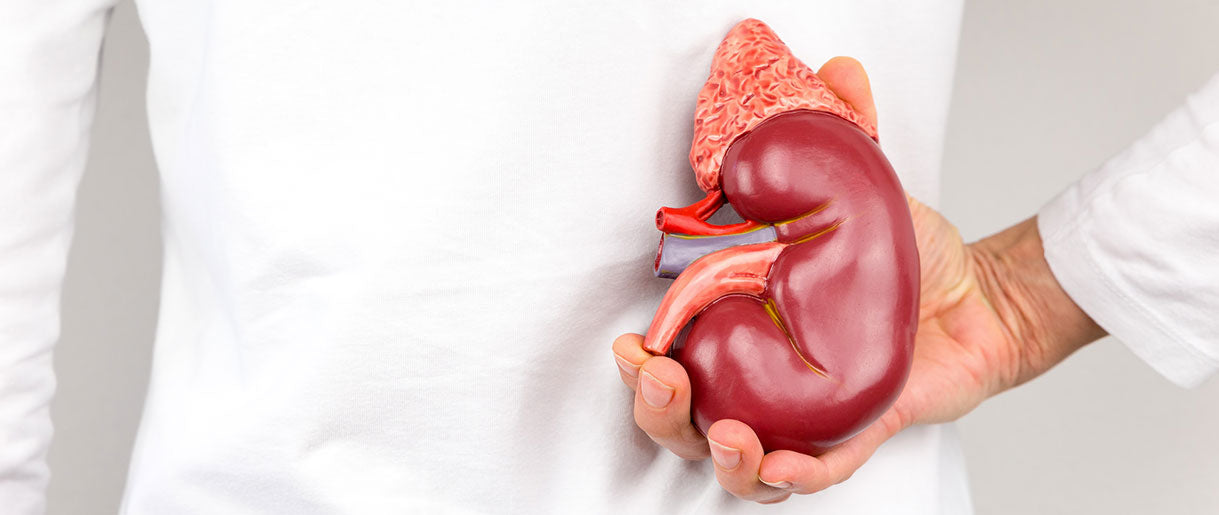Mushrooms are incredibly versatile organisms. Some are delicious, while others are exceptional medicines. When it comes to mushrooms for cholesterol reduction, you can have your mushroom and eat it!
A few studies have also looked at using specific species of edible mushrooms in treating cardiovascular illness, such as high cholesterol and triglycerides, with promising findings thus far. But how are mushrooms good for cholesterol? And what are the mushrooms cholesterol benefits?
Below we explore the bestmushrooms for cholesteroland the research backing these claims.
Understanding Cholesterol

Cholesterol is a kind of lipid that serves various functions in your body. Because lipids do not dissolve in water, they do not separate in your blood. Instead, they travel through your blood to various parts of your body that require them.
Your liver produces enough cholesterol to meet your body's requirements. However, you can receive additional cholesterol from the foods you consume. Your body has a system in place to eliminate excess cholesterol. However, that system sometimes doesn't function properly or becomes overburdened. As a result, excess cholesterol may circulate in your blood. And that's when things can go wrong.
There are numerous forms of cholesterol in your body. LDL cholesterol is an abbreviation for low-density lipoproteins. These particles are primarily composed of cholesterol, which they transport to your body's cells. LDLs are necessary for your body but become harmful when too many are in your blood.
They can mix with other molecules and accumulate on the artery walls. These fatty deposits combine to produce plaque, which grows in size over time. This plaque formation is known as atherosclerosis, increasing your risk of heart attack, stroke, or other disorders.
HDL cholesterol is an abbreviation for high-density lipoproteins. These lipoproteins are comprised mainly of protein. HDL is the "good" cholesterol because it carries extra cholesterol from your bloodstream to your liver.
VLDL cholesterol is an abbreviation for very low-density lipoproteins. VLDLs contain triglycerides and cholesterol but little protein. They're "bad" because, like LDLs, they can contribute to plaque accumulation in your arteries.
Mushrooms And Cholesterol

Mushrooms are fungi that grow above or below ground and have different fruiting bodies. Edible mushrooms are becoming more popular as part of a healthy diet, and you've probably seen a few types in the grocery store or on the menus of your favorite restaurants. Although most mushrooms are used in cooking, some have been utilized in Greek and Chinese traditional medicine to address medical issues, including high cholesterol.
Studies on the usage of mushrooms in the treatment of high cholesterol have focused on Shiitake (Lentinus edodes), Portobello (Agaricus bisporus), and oyster mushrooms (Pleurotus ostreatus) - three of the more common mushrooms found in grocery shops and restaurants. Apart from these, medicinal mushrooms help too!
A few compounds present in mushrooms appear to contribute to their lipid-lowering effects:
- Mushrooms contain varying amounts of beta-glucan, a type of soluble fiber. Beta-glucan is thought to interfere with cholesterol absorption into the bloodstream.
- Eritadenine is considered to reduce cholesterol levels by influencing how particular lipids are synthesized in the liver.
- Mevinolin, another mushroom component, blocks HMG CoA reductase, a critical enzyme in the body's cholesterol production.
The quantities of these cholesterol-lowering compounds vary between mushroom species and are currently being researched as potential treatments for heart disease prevention.
Now, how are mushrooms good for high cholesterol? Onto this, next.
Best Mushroom For Cholesterol
Scientists have studied several mushrooms for their cholesterol and lipid-lowering properties. Let’s explore the research on mushroom good for cholesterol.
Shiitake Mushrooms

Medicinal mushrooms, particularly Shiitake mushrooms, in particular, have cholesterol-lowering(1) properties. Eritadenine, a component of Shiitake, is responsible for its capacity to lower cholesterol. It aids in eliminating cholesterol and lowering circulating levels in the blood.
In one study, 9 grams of dried shitake mushrooms consumed daily resulted in a 9-12% reduction in total cholesterol. Triglycerides dropped by 6-7%.
Shiitake mushrooms are safe to eat if you take cholesterol medication because they do not contain lovastatin, the active ingredient in most cholesterol medications. These mushrooms have a high protein content and a robust flavor, making them an excellent meat substitute.
Oyster Mushrooms

Oyster mushrooms(2) are both nutritious and delicious. They've been lauded for their cholesterol-lowering abilities because they naturally contain trace levels of lovastatin, a cholesterol-lowering ingredient commonly found in cholesterol medication.
These mushrooms also contain anti-inflammatory and hepatoprotective properties and the capacity to lower blood glucose levels. As a result, oyster mushrooms are an excellent way to boost general health and guard against the adverse consequences of excessive cholesterol.
Lion's mane

A study(3) looked into the effects of Lion's mane, also known as Hericium erinaceus, on fat metabolism. For 28 days, mice fed a high-fat diet were given extracts of Lion's mane mushroom. Body weight increase and fat levels both decreased significantly. Fat levels in the liver and blood were also reduced. Lion's mane extracts, according to the researchers, boost lipid metabolism and can help with heart health.
Maitake

The cholesterol-lowering benefits of Maitake and other medicinal mushrooms on rats were researched. After four weeks of feeding rats, 50 g/kg Maitake fibers, blood cholesterol, and hepatic LDL levels were measured. The findings of this study show that Maitake mushroom fibers reduced total cholesterol levels(4) in the blood via increasing cholesterol excretion in the feces.
In another study(5), researchers examined how Maitake mushrooms affected mice's blood and liver cholesterol levels on a high-cholesterol diet.
Following a high-fat diet, total cholesterol and triacylglycerol levels in the liver increased significantly. Cholesterol and phospholipid levels were increased in the blood. For four weeks, the mice were given 10% freeze-dried Maitake powder.
The lipid levels in the blood and liver of mice fed a cholesterol-free diet were compared. The results showed that mice fed the mushroom had decreased total cholesterol levels in their blood.
Chaga

Chaga mushroom lowers blood cholesterol levels. A study(6) on experimental individuals over eight weeks lowered total cholesterol, bad cholesterol (or LDL), and triglycerides. The same study found that using the Chaga mushroom increased anti-oxidant levels.
Another study discovered that Chaga mushrooms(7) enhanced good cholesterol levels in addition to lowering bad cholesterol.
Reishi

Few studies suggest that Reishi mushrooms may benefit high cholesterol levels and lower LDL cholesterol and triglyceride levels. A study(8) looked into the cholesterol-lowering characteristics of Ganoderma and discovered that Reishi could lower LDL cholesterol in vivo in various ways. Based on these findings, researchers believe new cholesterol-lowering foods and treatments containing Reishi can be developed.
Reishi mushroom(9) may lower triglycerides and improve "good" HDL cholesterol, according to a 12-week study of 26 participants. According to the researchers, triacylglycerols were reduced in the first treatment period, and HDL cholesterol increased with Lingzhi but not with the placebo. According to the findings, Lingzhi may have minor antidiabetic benefits and may alleviate diabetes dyslipidemia, as previously demonstrated in animal research.
Incorporating Medicinal Mushrooms For Cholesterol Into The Diet

There are numerous ways to integrate mushrooms into your cholesterol-lowering diet, including adding them to appetizers. Fresh or dried edible mushrooms are available at supermarkets, health food stores, and farmer’s markets.
Each kind of mushroom requires a unique cooking method. Dried mushrooms, for example, should be rehydrated by mixing them with boiling water and allowing them to sit until they swell up. Large mushrooms, such as portabellas and Lion's mane, can be baked, while delicate mushrooms, such as Shiitake and button mushrooms, should be lightly sautéed in a skillet or wok.
In addition to cooking using dried or fresh mushrooms, they can be used to brew tea. To make mushroom tea, soak dried mushrooms in water for at least eight hours or overnight. Remove the mushrooms from the water in the morning. After straining, place the water in a clean pot and boil over medium to high heat for 5-10 minutes. Allow the tea to cool before serving.
Alternatively, mushroom powders can be used. Experiment using mushroom powders in:
- Warm drinks, like tea and coffee.
- Cold drinks, like smoothies, iced elixirs, and smoothie bowls.
- Salad dressings.
Mushrooms for Cholesterol
FAQs About Mushrooms For Cholesterol
What Is The Dosage Of Mushrooms Needed To Lower Cholesterol?
Doses of mushroom extracts vary but commonly range from 1 to 2 grams. If you are new to medicinal mushrooms, double the dosage for the first two weeks for more significant effects.
Are There Any Side Effects Of Taking Mushrooms For Cholesterol?
Mushrooms are generally safe. However, some people may experience nausea, rashes, and digestive upset.
Are There Any Interactions Between Mushrooms And Other Medications?
Mushrooms may interact with blood thinners, antidiabetic medications, and medications that lower blood sugar. It is essential to consult your physician before beginning a mushrooms products, particularly if you are taking medications for chronic conditions.
Key Takeaway
Mushrooms naturally decrease cholesterol due to their high fiber and protein content. Other mushrooms include compounds that aid in the reduction of high cholesterol. Lion's mane, Reishi, Shiitake, and Maitake are some of the best mushrooms for cholesterol. In addition, you can lower your total cholesterol intake by substituting mushrooms for meat in recipes. Even if you can substitute half of the meat in a dish with mushrooms, you will significantly minimize your cholesterol intake.
References
- Medicinal Mushrooms: A Clinical Guide, (1)https://alquimiahealingarts.com/wp-content/uploads/2020/12/Medicinal-Mushrooms_-A-Clinical-Guide-2nd-Edition.pdf
- Oyster mushroom reduced blood glucose and cholesterol in diabetic subjects, (2)https://pubmed.ncbi.nlm.nih.gov/17344789/
- Yamabushitake mushroom (Hericium erinaceus) improved lipid metabolism in mice fed a high-fat diet, (3)https://pubmed.ncbi.nlm.nih.gov/20622452/
- Cholesterol-lowering effects of maitake (Grifola frondosa) fiber, shiitake (Lentinus edodes) fiber, and enokitake (Flammulina velutipes) fiber in rats, (4)https://pubmed.ncbi.nlm.nih.gov/11520942/
- Effect of dietary Maitake (Grifola frondosa) mushrooms on plasma cholesterol and hepatic gene expression in cholesterol-fed mice, (5)https://pubmed.ncbi.nlm.nih.gov/24292357/
- Effect of the Inonotus Obliquus Polysaccharides on Blood Lipid Metabolism and Oxidative Stress of Rats Fed High-Fat Diet In Vivo, (6)https://ieeexplore.ieee.org/document/5305591
- Antihyperglycemic and antilipidperoxidative effects of dry matter of culture broth of Inonotus obliquus in submerged culture on normal and alloxan-diabetes mice, (7)https://pubmed.ncbi.nlm.nih.gov/18434051/
- Cholesterol-lowering properties of Ganoderma lucidum in vitro, ex vivo, and in hamsters and minipigs, (8)https://www.ncbi.nlm.nih.gov/pmc/articles/PMC385249/
- Study of potential cardioprotective effects of Ganoderma lucidum (Lingzhi): results of a controlled human intervention trial, (9)https://pubmed.ncbi.nlm.nih.gov/21801467/









Let Us Know Your Comments